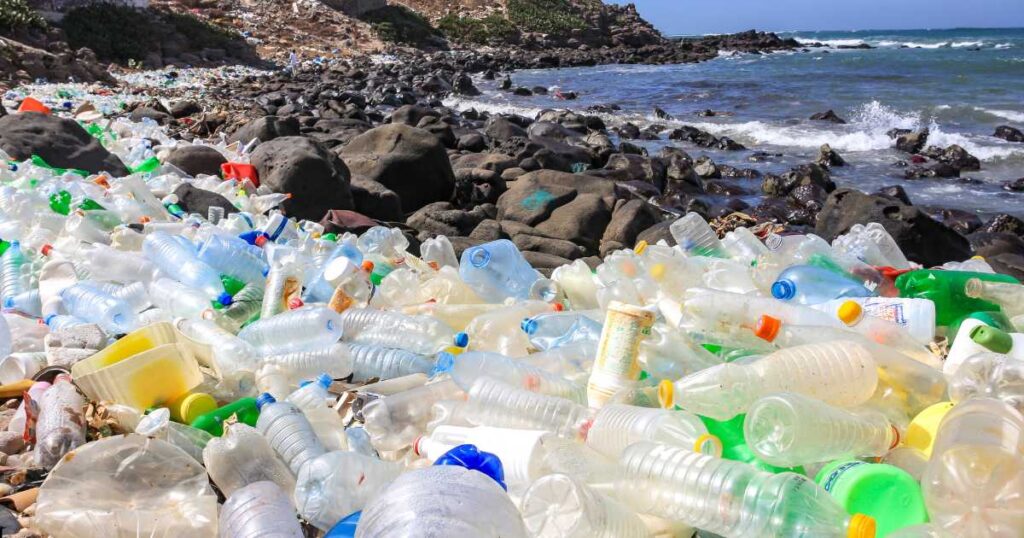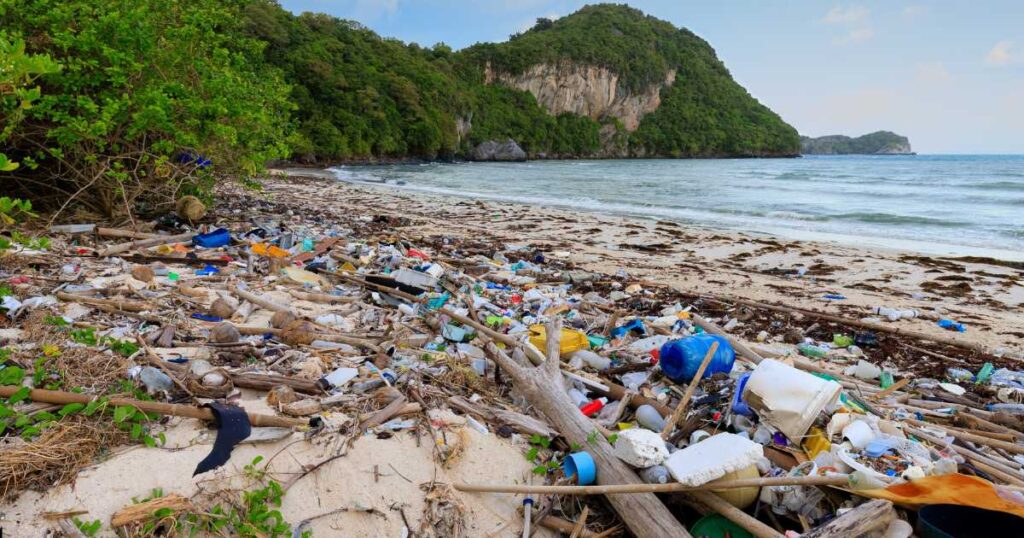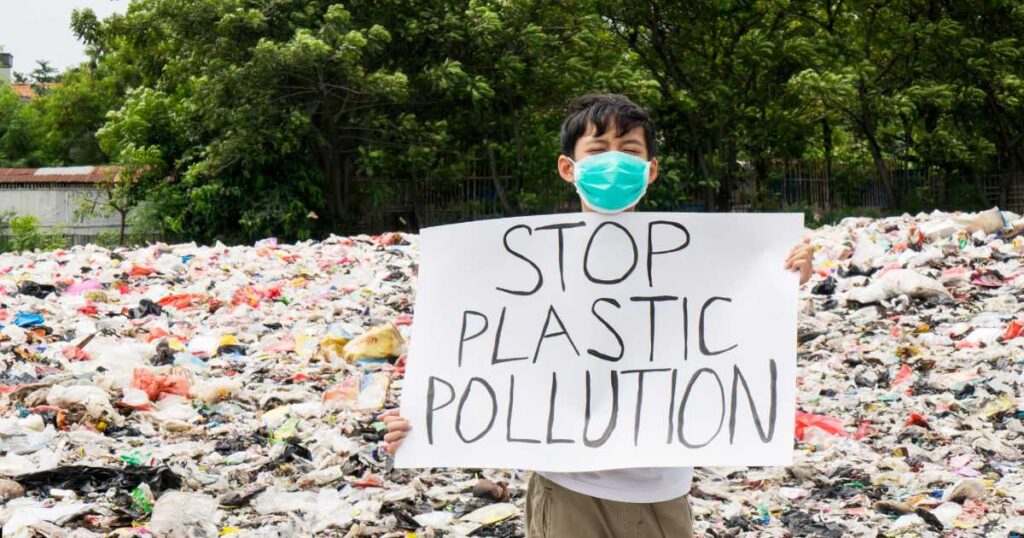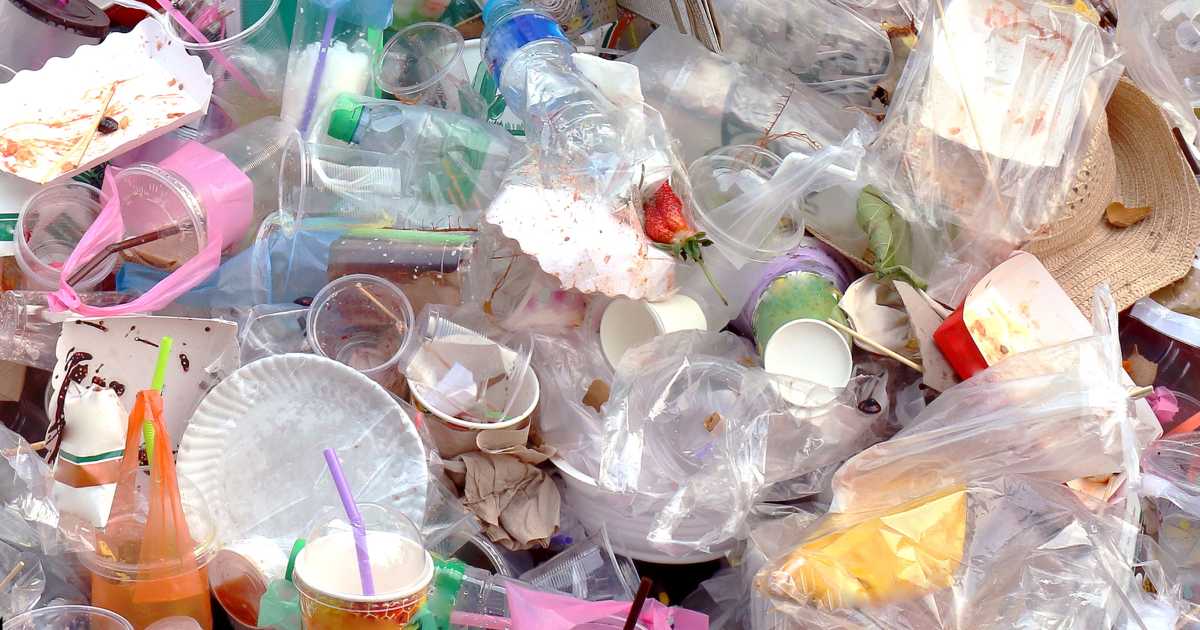Plastic is everywhere—it’s cheap, versatile, and incredibly convenient. But beneath its many benefits lies a growing crisis. Plastic waste is spiraling out of control, wreaking havoc on our planet. Each year, a staggering 12 million tonnes of plastic find their way into our oceans.
To make matters worse, scientists have even discovered microplastics embedded deep within Arctic ice.
The question is, how do we turn the tide on this environmental disaster?
In this article, we’ll explore what plastic pollution is, the factors that contribute to it, and the harm it causes to our planet and its inhabitants. We’ll also provide practical tips to reduce plastic waste, from eliminating single-use plastics to supporting more responsible manufacturing practices. Together, we can create positive change!
What Is Plastic Pollution?
Plastic pollution refers to the overwhelming build-up of synthetic plastic materials in the environment, causing harm to ecosystems, wildlife, and even human populations. While plastic was initially celebrated as a groundbreaking innovation, its widespread use has created a crisis.
By the late 20th century, plastic pollution was evident across diverse environments, from ocean depths to mountain peaks. Startling statistics emphasize the issue: in 2016, the World Economic Forum reported that 78 million tonnes of plastic were produced annually, yet only 14% was recycled.
An alarming 32% of plastic has already entered the environment. Even more troubling, projections suggest that by 2050, the amount of plastic in the ocean could equal the weight of all the fish. This degree of pollution is not just concerning—it’s catastrophic.
Major Causes of Plastic Pollution
Excessive Waste Production
Our society creates a huge amount of waste, and plastic makes up a big chunk of it. Things like littering and the “throwaway” culture only make the situation worse. Cutting down on waste is essential to solving this problem.

Commercial Fishing Nets
Fishing nets, though crucial for the industry, frequently break or are discarded, leading to pollution in the oceans and posing a threat to marine life. These nets can persist in the environment for an extended period, releasing harmful toxins and ensnaring sea creatures. Implementing stricter regulations and improved management practices can help mitigate this damage.
Improper Plastic Disposal
A significant amount of plastic waste isn’t recycled as it should be. Instead, it ends up in landfills, scattered in natural environments, or burned—releasing harmful emissions and contributing to air pollution. Learn more about waste management dumpster rules to ensure proper disposal methods.
Plastic’s Long Decomposition Time
Most plastics take over 400 years to break down, leading to an accumulation of waste that outlasts generations.
Natural Pollution Spread
Due to its lightweight nature, plastic is easily carried by wind, rivers, and ocean currents, spreading far beyond its original source and polluting pristine environments.
Overproduction and Overuse of Plastic
The primary driver of plastic pollution is our overreliance on it. The volume of plastic produced vastly exceeds our ability to manage or dispose of it responsibly.
Why Plastic Waste is Harmful to the Planet?
Before diving into individual actions to reduce plastic waste, let’s explore how plastic pollution harms our planet and all who live on it. For a deeper understanding of related environmental issues, check out our complete guide to climate change.

Disruption of the Food Chain
Plastic pollution significantly affects the food chain. Animals often ingest plastic, mistaking it for food, introducing toxins into their bodies. These harmful substances move up the food chain, impacting the health of all species, including humans.
Risks to Human Health
Plastics that infiltrate our food and water supplies bring toxic chemicals into our bodies. Consuming these substances can pose serious health risks over time, highlighting the danger of plastic contamination.
Groundwater Contamination
When plastics break down, they release harmful toxins into groundwater, polluting a critical source of drinking water. This contamination poses long-term threats to human health and ecosystems.
Harm to Animals
Plastic waste causes immense suffering to animals. Marine life often gets entangled in fishing nets, while land animals can suffocate on plastic bags or ingest plastic, leading to injury or death.
Pollution of Land, Air, and Water
Plastic is a triple threat to the environment. It pollutes land and water through litter and improper disposal, while its production and incineration release harmful emissions that contribute to air pollution. Addressing this issue involves understanding the main objectives of waste management.
High Cost and Difficulty of Cleanup
The sheer amount of plastic waste makes cleanup efforts daunting and expensive. Removing plastics from ecosystems requires significant resources and often feels like an uphill battle.
Recognizing these issues is the first step toward meaningful change.
By understanding the far-reaching effects of plastic pollution, we can commit to reducing waste and advocating for a cleaner, healthier planet.
How Can We Reduce Plastic Waste?
Reducing plastic waste is an important step toward a healthier planet, and there are many ways to make a difference in your daily life. While individual efforts matter, real change requires action at a larger scale.
Consider supporting systemic change by contacting policymakers, signing petitions, or advocating for stricter regulations. Together, personal and collective actions can drive meaningful progress.
Here’s how you can start reducing plastic waste today:

Recycle Correctly
Recycling is a vital part of reducing waste, but it must be done properly to be effective. Follow these universal recycling tips: Recycle clean bottles, cans, paper, and cardboard. Avoid placing food or liquids in recycling bins.
Keep plastic bags and recyclables separate; do not place recyclables in plastic bags. Although recycling systems vary worldwide, these rules are a good baseline to follow.
Cut Down on Single-Use Plastics
Single-use plastics, like straws, coffee cups, plastic cutlery, and wet wipes, are major contributors to pollution. Start by identifying the single-use plastics in your daily routine and seek out reusable or biodegradable alternatives. Awareness is the first step toward reducing reliance on these items.
Choose Eco-Friendly Packaging
If you own or manage a business, switching to sustainable packaging options can significantly reduce plastic waste.
Materials like paper, cardboard, or bioplastics—made from renewable resources—are excellent choices.
For food-related industries, eco-friendly packaging can protect products without contributing to pollution. Explore available guides and resources for more insights into sustainable practices.
Perform a Trash Audit
A trash audit involves reviewing your waste to identify common items you discard. This can help you find reusable alternatives or make smarter purchasing decisions. This is particularly helpful when planning dumpster rentals for small businesses to streamline waste reduction efforts.
For example:
If you frequently throw away coffee cups, invest in a reusable one. If snack wrappers dominate your trash, opt for larger, recyclable packs or join recycling programs like Terracycle.
Switch to Reusable Options
Reusable items are a powerful way to cut down on plastic waste. From water bottles to cloth shopping bags, incorporating these into your routine is simple and effective. Even small swaps can have a big impact—carry your own utensils, bring a reusable water bottle, or replace clingfilm with zero-waste alternatives.
Grow Your Own Food
As we’ve discussed, many fruits and vegetables at the supermarket come wrapped in plastic. Why not avoid this entirely and become more self-sufficient by growing your own food?
Shop at Local Markets and Low-Waste Stores
If you’re not quite ready to grow your own food, buying from local markets and low-waste stores is a great alternative. Depending on where you live, markets can be more affordable than supermarkets—so it’s worth doing a little research to find the best option for you. While low-waste stores may be pricier, they’re perfect for items like pasta, rice, pulses, and nuts. Plus, you bring your own containers, which means zero waste!
Bake Your Own Bread
Why not take baking into your own hands? Making your own bread and baked goods is not only a fun and fulfilling activity but also helps reduce the need for plastic-wrapped products from the store. Plus, fresh homemade bread always tastes better!
Make Your Own Cleaning and Cosmetic Products
It’s easy to get caught up in the convenience of store-bought cleaning and beauty products, but did you know many of these can be made with simple ingredients right at home? This not only cuts down on plastic waste but also eliminates harmful chemicals from your routine. Alternatively, you can choose products in bar form or metal packaging. To get you started, here are some DIY recipes:
All-Purpose Cleaner:
1 part white vinegar
1 part water
Lemon juice
Rosemary sprigs
Deodorant:
2 tbsp coconut oil
4 tbsp cornflour
4 tbsp baking soda
Essential oils of your choice
Revamp Your Laundry Routine
Making your laundry more eco-friendly is another great way to cut down on plastic waste. Traditional detergents often come in plastic bottles or sachets, so try a zero-waste detergent or even a laundry egg—recyclable, plastic-free, and full of cleaning pellets that do the job without the waste.
You can also make your own stain remover and buy a microfiber washing bag to prevent microplastics from shedding. And for an extra tip, washing your clothes on cold settings helps them last longer, reducing both plastic waste and your carbon footprint.
Say No to Extra Plastic with Takeaways
When ordering takeaway, it’s a simple but effective step to ask for no added cutlery or plastic extras. You can even leave a note to request minimal plastic packaging. Additionally, consider saving takeout for special occasions to avoid all the packaging waste that comes with it.
Cooking at home or dining out reduces the need for excess packaging—helping to cut down on waste! Making these small changes in your everyday life can have a big impact. Whether you’re growing your own food, reducing plastic packaging, or switching up your laundry routine, each step helps create a more sustainable future.
FAQs: How to Reduce Plastic Waste
What is the most effective way to reduce plastic waste?
The most effective way to reduce plastic waste is to minimize single-use plastics, such as plastic bags, straws, and bottles. Opt for reusable items, buy in bulk, and choose eco-friendly alternatives like paper, glass, or metal.
Can recycling really make a difference in reducing plastic waste?
Yes, recycling helps prevent plastics from ending up in landfills and the ocean. However, it’s essential to recycle correctly—clean containers, avoid mixing in food waste, and ensure no loose plastic bags. It’s also crucial to reduce the amount of plastic we consume in the first place.
How can I avoid plastic packaging when shopping?
Start by shopping at local markets or zero-waste stores where you can bring your own containers. Avoid packaged produce and opt for bulk items. Additionally, buy items with minimal or recyclable packaging, and choose brands that prioritize sustainable practices.
What alternatives to plastic can I use in my daily life?
There are many alternatives to plastic, such as bamboo, glass, metal, and cardboard. Use reusable shopping bags, glass containers, and eco-friendly personal care products. For food storage, try beeswax wraps, glass jars, or silicone bags.
How can I encourage businesses to reduce plastic waste?
You can make your voice heard by supporting businesses that use eco-friendly packaging and sustainable practices. Contact businesses directly, sign petitions, or share your preferences on social media. The more customers demand sustainable options, the more businesses will make changes.
Conclusion:
Reducing plastic waste is a shared responsibility that starts with small but impactful steps we can take in our daily lives.
From reducing single-use plastics to supporting sustainable businesses, every action counts. By making informed choices, such as switching to reusable items, shopping at local markets, and recycling properly, we can all contribute to a cleaner, healthier planet.
Absolutely, what we do individually is important, but it’s equally crucial to advocate for broader changes such as stronger regulations and policies that protect our planet. By working together, we can reduce plastic waste, improve environmental care, and build a sustainable future for the generations ahead.
